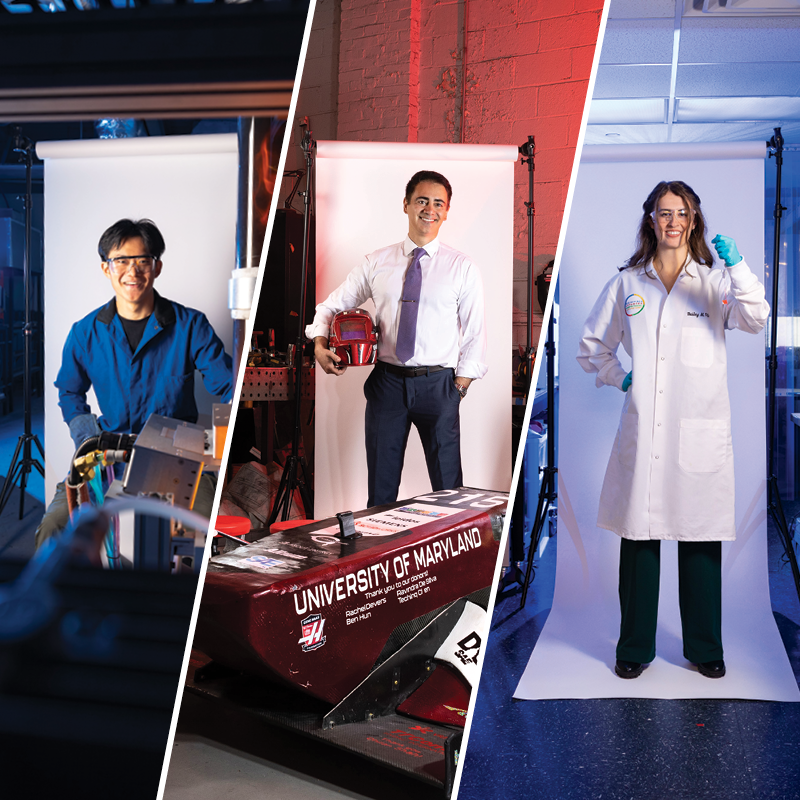News Story
New book on Safety Challenges and Strategies of Using Lithium-Ion Batteries


Lithium-Ion Batteries: A History of Fires and Explosion Incidents - Lessons Learned and To Be Learned
Lithium-ion (Li-ion) batteries were introduced into the market in the 1980s and have now become widely used in electronic devices, including smartphones, laptops, electric bikes, scooters, electric vehicles, and energy storage systems. Although they have high energy density and environmental benefits, safety is a top concern. Numerous lithium-ion battery fire and explosion incidents have been reported, resulting in property damage and bodily injuries. These incidents were primarily due to thermal runaway, where chemical reactions cause the battery to reach temperatures as high as 900℃, resulting in fires that can easily spread and explosions due to gas generation in the batteries.
One of the earliest and most notable fire incidents that brought significant attention to the safety concerns of lithium-ion batteries occurred with laptops in the mid-2000s. In 2006, Dell announced a recall of approximately 4.1 million lithium-ion laptop batteries in cooperation with the US Consumer Product Safety Commission (CPSC). This recall was initiated after reports that the laptop battery could overheat, causing a fire hazard to consumers. The batteries were manufactured by Sony and were used in laptops sold between April 2004 and July 2006. Following Dell’s recall, Apple and other manufacturers also initiated recalls for similar reasons, with Apple recalling 1.8 million devices with batteries manufactured by Sony. The root cause of these incidents was traced back to manufacturing defects that could lead to internal short circuits and thermal runaway, at that time referred to as spontaneous combustion.
Starting in the late 2000s, incidents related to lithium-ion battery fires in electronic cigarettes were being reported more regularly. Investigations identified 195 incidents of e-cigarette fires and explosions in the United States between 2009 and 2016, and among these incidents, 61 of them occurred in pockets, 60 of them occurred when devices were in use, 48 of them occurred when batteries were charged, and 18 of them occurred in storage. For example, in 2016, an e-cigarette battery exploded in a man’s pocket in New York, causing severe leg burns. In 2018, an e-cigarette battery exploded when in use, causing an instant death.
In the 2010s, there were many notable lithium-ion fire incidents. In 2010, a UPS cargo plane transporting batteries crashed in Dubai due to a battery fire, killing two crew members. In 2011, an Asiana Airlines cargo plane crashed due to a fire in a battery pack, causing the deaths of two pilots. In 2013, Boeing 787 Dreamliners were grounded worldwide due to two battery fires within 9 days of each other, where one required an emergency landing. In 2016, Samsung Galaxy Note 7 smartphones were recalled, and production was stopped after the devices burst into flames due to battery faults. In 2018, HP recalled 50,000 laptop and mobile workstation batteries because of battery problems that could result in fires. In 2019, Apple recalled about 458,000 MacBook Pro laptop computers due to fires caused by the batteries.
Although there have been numerous improvements in technology and safety standards, incidents have continued to occur, including fires of electric bikes, scooters, and electric vehicles. The Fire Department in New York (FDNY) reported that there were 28 fires with 16 injuries in 2019; 104 fires, 79 injuries, and 4 deaths in 2021; 216 fires, 147 injuries, and 6 deaths in 2022; and 268 fires, 150 injuries, and 18 deaths in 2023, all due to lithium-ion batteries. In February 2024, a battery fire from e-bikes occurred on a residential block, causing 44 injuries and 15 deaths. In March 2024, there were two battery fires on the campus of the University of Maryland due to e-scooters, and students were told not to bring them into buildings anymore.
In 2013, a Tesla Model S involved in high-speed travel resulted in an accident, in which the vehicle caught fire and its front end burst into flames. In 2019, a Tesla Model S caught fire in a garage. In 2020, an electric Porsche Taycan caught fire while parked in a garage. In 2022, Chevrolet recalled 142,000 Bolt electric vehicles due to battery fires caused by defects in LG cells, resulting in a cost of more than $1.8 million. From February 24, 2020, to March 16, 2022, Mercedes Benz, Hyundai, General Motors, Chrysler, and Volkswagen notified the National Highway Traffic Safety Administration (NHTSA) about safety-related battery defects in their EVs and conducted multiple recalls, including the 2019 Smart Fortwo, 2017-2018 Pacifica plug-in hybrid EV, 2017-2022 Chevrolet Bolt EV, 2019-2022 Kona, 2020 Ioniq, 2021 ID4, and 2022 Chevrolet Bolt EUV. In 2023, Stellantis recalled over 90,000 plug-in hybrid electric vehicles (PHEVs) due to battery fires.
On July 23, 2024, a truck carrying lithium-ion batteries (container weight exceeding 75,000 pounds) overturned and caught fire near Baker, California, in the northbound lanes of I-15, a major highway to Las Vegas. Due to the fire and hazardous materials and chemicals involved, both northbound and southbound lanes were closed. Drivers were trapped on the highway in 109°F (43℃) heat for hours on Friday and Saturday before the lanes were reopened.
On August 1, 2024, an electric Mercedes-Benz sedan caught fire while parked in the underground parking lot of an apartment building in Incheon, South Korea. This incident damaged some 140 cars, led to the evacuation of more than 200 families (more than 700 residents), and injured 23 people. Following the massive fire caused by the Mercedes-Benz vehicle, consumer calls for mandatory disclosure of electric vehicle battery information have been growing in South Korea. In addition, some communities are considering banning electric vehicles from underground parking areas when their charge exceeds 90%, due to the increased risk of fire.
On August 19, 2024, California firefighters had to douse a flaming battery in a Tesla semi-truck with about 50,000 gallons (190,000 liters) of water to extinguish flames after a crash on a freeway in California. Firefighters also used an aircraft to drop fire retardant on the immediate area of the electric truck as a precautionary measure. Firefighters said that the battery reached temperatures of 1,000° F (540℃) while it was burning. The freeway was closed for about 15 hours as firefighters made sure the batteries were cool enough to recover the truck.
In early September 2024, BMW announced they were recalling over 140,000 Mini Cooper SE electric vehicles due to potential battery defects that could lead to fires, according to documents filed with the National Highway Traffic Safety Administration (NHTSA). The recall affects models produced from 2020 to 2024, when the batteries may have been manufactured outside production specifications.
The Federal Aviation Administration (FAA) reported that there were 510 incidents due to lithium-ion batteries, involving smoke, fire, or extreme heat, from 2006 to 2024. This amounts to an average of two fires in airplanes per month. However, newer FAA statistics show that the annual lithium battery incidents have surpassed 52, which means there is more than one incident per week on average.
Fire incidents have also been a concern in the waste management and recycling of lithium-ion batteries. There have been reported battery fires in waste containers, transportation hubs, intermediate sites, and end-of-life facilities. In 2007, a fire occurred at a waste treatment plant in Preston, United Kingdom, caused by lithium-ion batteries. In 2007, a massive explosion in Canada occurred due to batteries, and an entire waste processing facility was destroyed.
Battery fires have not been limited to the Americas. In January 2024, Health Canada started recalling batteries for Dyson vacuums that were sold in Canada from Amazon due to risks of fire and burns. Specifically, the recall involved the FirstPower 4000 mAh V6 Battery Replacement for Dyson V6 Series Vacuums. On June 24, 2024, in Hwaseong, South Korea (28 miles south of Seoul), a lithium battery factory owned by Aricell caught fire after several batteries exploded. The Aricell factory housed an estimated 35,000 battery cells on its second floor, where the batteries were inspected and packaged, with more stored elsewhere. The fire killed 22 workers and wounded 8 more.
In China, where the largest percentage of lithium-ion batteries is made, there have clearly been the most incidents of battery fires. In June 2020, NIO recalled 4,803 ES8 electric vehicles due to fire concerns in their battery packs. In the first half of 2021, there were about 1.28 million EVs that were recalled due to safety-related battery defects, and from January 2021 to July 2021, seven Chinese EV manufacturers conducted recalls for a total of 56,399 EVs due to defective batteries.
In 2022, there were 18,000 reported e-bike fires in China, which increased by 23% compared to 2021. Also in 2022, there were 3,242 reported fire incidents caused by rechargeable batteries (mostly for e‑bikes) that occurred inside places of residence, which increased by 17% compared to 2021. In the first quarter of 2022, there were 3,777 e-bike fires, which resulted in a year-on-year increase of 36%. In 2023, there were 21,000 fires, a 17.4% increase from the previous year.
By 2023, there were 1,496 major lithium-ion battery manufacturers in China. According to the vice director of the national testing center in China, 20 out of 100 projects failed to pass basic testing requirements due to quality issues, including 14 that caused fires. This also includes a battery manufacturing facility in Guangdong, which caught fire due to defective batteries on May 11, 2023. In January 2024, a battery fire caused the deaths of 13 schoolchildren. A few days later, 39 died in another battery fire, which led President Xi to state that more needs to be done to prevent such fires. In February 2024, an apartment in Nanjing, China, caught fire due to batteries in electric bikes, killing 15 people and injuring more than 40. On May 23, 2024, due to the increasing number of e-bike fires, the CCP had a nationwide crackdown and assigned over 74,000 police to seize more than 300,000 e-bikes. On August 23, 2024, a fire broke out at a street shop in Jiangsu, resulting in six deaths and reducing several electric bikes to just their metal frames. On August 28, 2024, a battery fire broke out at an electric bike shop in Foshan, which spread to a nearby grocery store and injured 10 people. This is only a small snapshot of the battery fires in China.
Although lithium-ion batteries have been considered a mature technology, there are consequential safety risks that continue to surface. Part of the problem arises from the widespread proliferation of batteries in everything that we use. However, another part of the problem stems from batteries being a commodity item that are relatively easy to make but with severe safety risks if not made in a high-quality manner. For example, recently, more e-bikes, e-scooters, power banks, and vaping devices have caught fire, and one may ask why this is the case. While this has not been extensively studied yet, there are several likely reasons.
First, EV makers tend to more carefully choose the companies that will make the batteries for their cars. The battery companies typically make many billions of batteries per year and can assemble battery packs as well. These companies most often have facilities that resemble semiconductor clean rooms with in-line manufacturing, and they use robotics with many automated quality control methods in place, including optical inspections and measurements of material characteristics.
The companies that make many of the e-bikes, e-scooters, power banks, and vaping devices are typically trying to market a low-cost product, frequently to students and young people, in some cases as a toy. These companies often do not know much about battery reliability and safety, and they typically depend on third-party battery pack manufacturers who buy the batteries (cells) at the lowest possible price. The manufacturers of these battery cells have, in many cases, factories that resemble garages, with a few workers moving materials around, often on many floors of a building. This type of environment can easily result in foreign materials getting into the battery, resulting in opportunities for failure and a resulting fire and explosion.
A second reason, although significantly less of a concern, is that some of the e-bikes, e-scooters, power banks, and vaping devices do not have battery management systems (BMSs). The lack of a BMS, or an improper BMS, may be a result of cost savings by a pack assembler or the final product manufacturer. However, because of the low cost of high-quality BMSs, this has become less of a problem, except in low-cost items.
A third reason pertains to abuse and the blaming of users, battery pack assemblers, and final product manufacturers. For example, overcharging has often been blamed on the users, but charge and discharge profiles and safety are controlled by the BMS, and most e-bikes, e-scooters, and power banks have BMSs with these types of safety-related controls. However, any battery that is abused in the sense of punctures, during pack assembly, storage, transportation, use, and disposal, can cause fires. Unlike in Tesla electric vehicles, where the battery pack is enclosed in a titanium case, most of the e-bikes, e-scooters, power banks, and vaping devices are enclosed in less costly materials like plastics.
This book aims to address the state of practice of lithium-ion batteries with a focus on safety. The reader is presented with a range of companies that are producing batteries, the various lithium-ion chemistries being implemented in batteries by these companies, and which chemistries are being used for various applications. Next, the numerous defects in design and manufacturing that can affect the propensity for fires are presented along with best practices. This is followed by qualification tests, quality assurance methods, and standards needed to ensure a safe design and address the storage and transportation of batteries. Subsequently, an overview of supply chain risks is presented, and the safety risks due to re-wrapped and counterfeit batteries are discussed. Then, there are discussions about how new regulations in the European Union concerning the ability to replace batteries and the right to repair will affect safety risks. Finally, there are discussions on the reuse, repurposing, and disposal of batteries.
After reading this document, the reader should have the information to be able to:
- Know the industry, having knowledge of its history and progression, current landscape, and future outlook, including manufacturing capacities, geographic distribution, and demand trends.
- Analyze batteries with confidence, learning about the types of batteries, their chemistries, failure modes and mechanisms, and the tradeoff between energy density and safety risks. By understanding the advantages and disadvantages of different cathode materials, anode materials, electrolytes, and separators, readers can make informed decisions when selecting batteries for specific applications.
- Future-proof your business, understanding the battery supply chain in the consumer, industrial, electric vehicle, and renewable energy sectors, and the pivotal roles played by key stakeholders. From cell manufacturers to gauge makers, pack houses, and product companies, understand how each entity contributes to safety assurance and risk mitigation throughout the stages from acquiring cells to delivering final products, identifying potential risks and vulnerabilities along the way. Emphasize how audits are crucial in battery manufacturing for quality control and risk management, enhancing safety and user confidence.
- Ensure product safety and compliance, gaining insights into the various safety mechanisms (current interrupt device, positive temperature coefficient devices, vents, separators, and flame retardants) that are and are not implemented in batteries, and the value and lack of value of regulations and safety standards governing batteries and their integration into products and systems. Gain insights into best practices for designing products that prioritize consumer safety while maintaining efficiency and performance.
- Know the safety testing protocols, exploring the evolution of safety test standards and their impact on design practices within the battery industry. Understand the intricacies of cell, pack, and product safety testing protocols, equipping yourself with the knowledge to assess and ensure compliance with rigorous safety standards. At the same time, understand the limitations of these tests and the fact that they do not guarantee the prevention of fires.
- Mitigate safety risks, learning about methods to identify and address potential battery material and production risks, and the storage and transportation of batteries, battery packs, and products incorporating batteries. The reader will also learn about data transparency challenges between manufacturers, end-users, and system designers, pointing out weaknesses in how manufacturers present information in data sheets about battery performance and storage for safe and reliable use.
- Promote safe sustainability, understanding the risks of repairing, reusing, repurposing, and recycling batteries.
PDF version of the book's preface
This book highlights the importance of industry–academia collaboration and international cooperation, drawing on the contributions of a diverse group of researchers and practitioners from around the world. Emphasizing the strength of long-term partnerships and cross-border collaboration, the work brings together experts from institutions such as CSIR-Central Scientific Instruments Organisation (India), Queensland University of Technology (Australia), University of Moratuwa (Sri Lanka), University of Manitoba (Canada), the University of Maryland (USA), Lahore University of Management Sciences (Pakistan), Temple University (USA), and Binghamton University (USA). By leveraging complementary expertise, shared datasets, and joint testing programs, alongside contributions from industry, government, and academic partners, the volume exemplifies CALCE’s model of global cooperation: aligning laboratories and standards bodies, accelerating best-practice adoption, and translating research into practical guidance to advance battery safety worldwide.
This book can be ordered online through the publisher.
Further details about CALCE battery research can be found here. Please contact Prof. Michael Pecht for information about the book and CALCE battery research.
Published September 22, 2025







